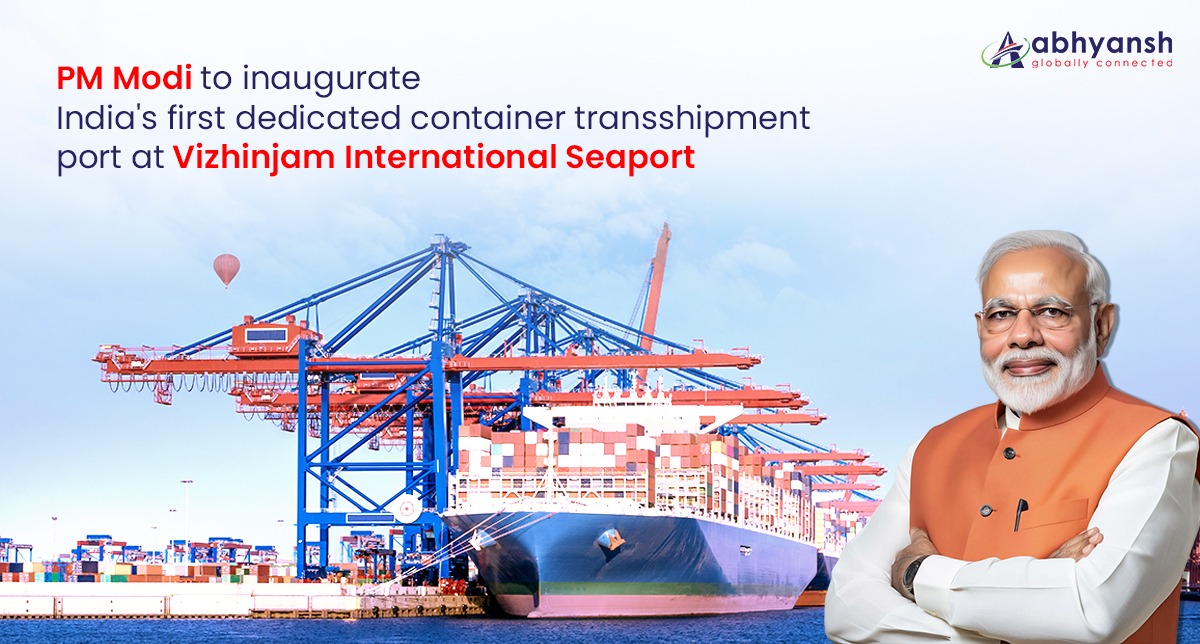Today marks a historic milestone for India’s maritime ambitions as Prime Minister Narendra Modi arrives in Kerala to commission the Vizhinjam International Seaport. This landmark project is expected to reshape India’s shipping and trade landscape, boosting global connectivity and strengthening economic power.
Located near Thiruvananthapuram, Vizhinjam is India’s first deepwater, multipurpose, greenfield seaport. It is designed to handle some of the world’s largest cargo ships, with a deep natural draft, minimal tidal variations, and a prime position right on major international shipping routes. Experts say this makes Vizhinjam a game changer for India’s trade and logistics sector.
The Vizhinjam project comes at an estimated cost of ₹7,700 crore. It has been under development for nearly eight years, with construction starting in 2015. The Kerala state government partnered with Adani Ports and Special Economic Zone Limited, one of the country’s top private port developers, to bring this massive infrastructure to life.
Despite several challenges, including delays from coastal conditions, local protests, and the global pandemic, the port has moved steadily forward through the joint efforts of central and state governments, private sector players, environmental agencies, and global consultants. The project was carefully designed to meet international standards while maintaining a strong focus on environmental sustainability.
How Vizhinjam Will Shape India’s Future
The commissioning of Vizhinjam International Seaport is not just about opening another port. It signals India’s determination to strengthen its position in global trade. Here are some of the key impacts expected in the coming years:
- Boost to Transshipment: Currently, a large part of India’s cargo is transshipped through foreign ports like Colombo and Singapore. Vizhinjam’s deepwater facilities will help capture this traffic, reducing reliance on foreign hubs and saving significant foreign exchange.
- Lower Logistics Costs: With world-class port infrastructure, Indian exporters and importers will face lower transportation and logistics costs. This will improve the competitiveness of Indian products in global markets.
- Stronger Regional Economy: The port is expected to generate thousands of jobs, both directly and indirectly, in sectors like shipping, warehousing, transportation, and port services. It will also create opportunities for local businesses, boosting the economy of Kerala and southern India.
- Attraction of Global Shipping Lines: With its advanced equipment, deep draft, and location close to key shipping lanes, Vizhinjam has the potential to become a major hub for global shipping giants, bringing more international traffic to Indian shores.
- Environmental Sustainability: The port has been developed with green technology and a commitment to environmental care, setting a standard for future infrastructure projects across the country.
- Strengthening National Security: Having a strong, well-equipped port on the southern tip of India enhances the country’s maritime security, improves naval logistics, and supports India’s strategic interests in the Indian Ocean.
The launch of Vizhinjam International Seaport is part of a larger national vision to modernize infrastructure, boost the blue economy, and position India as a powerful player on international maritime routes. This port is not just a local project, it is a symbol of India’s rise in global trade and its readiness to shape the future.
Stay tuned for more updates from today’s inauguration and the government’s long-term roadmap for maximizing Vizhinjam’s potential.






